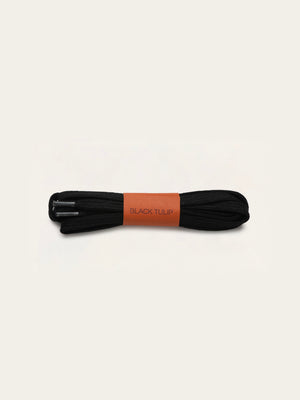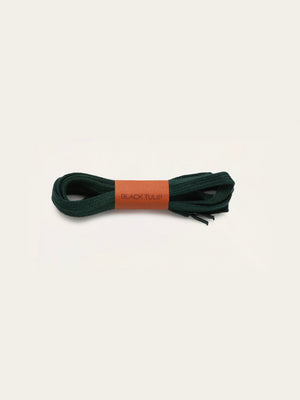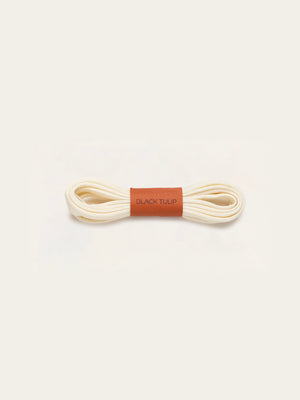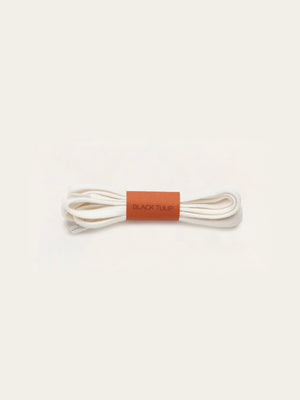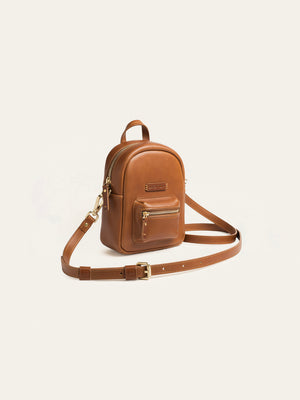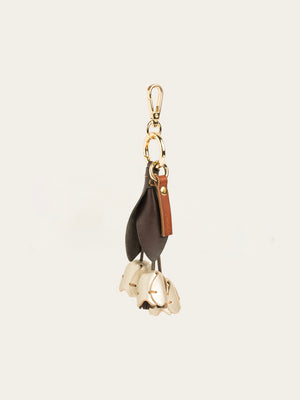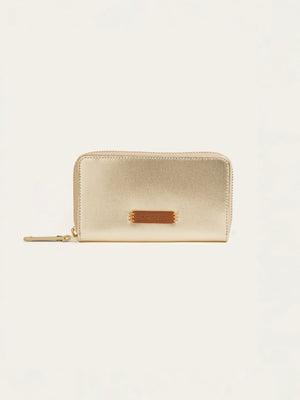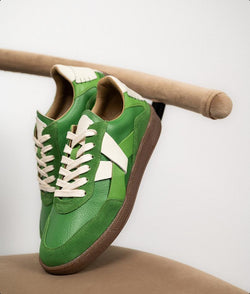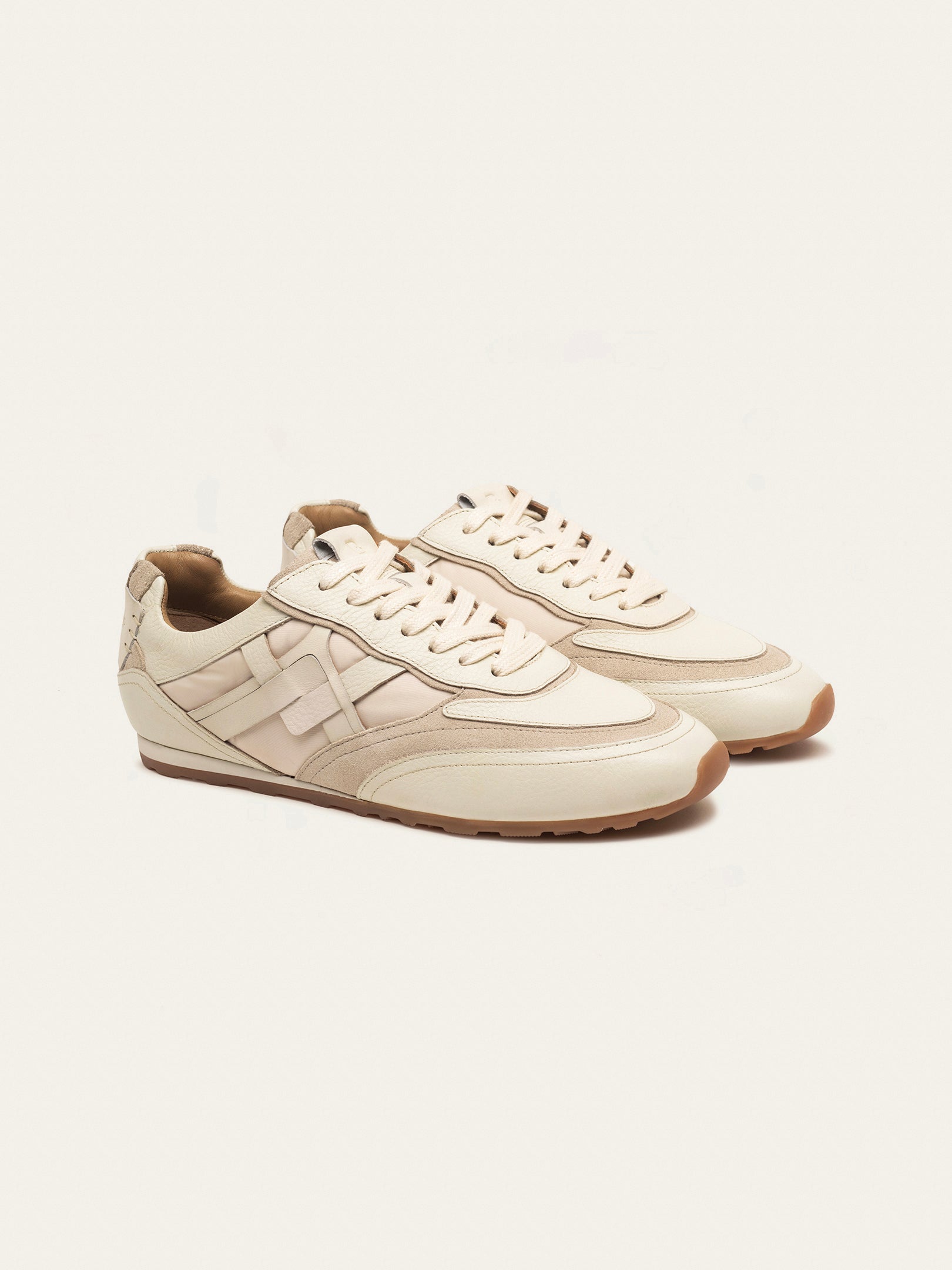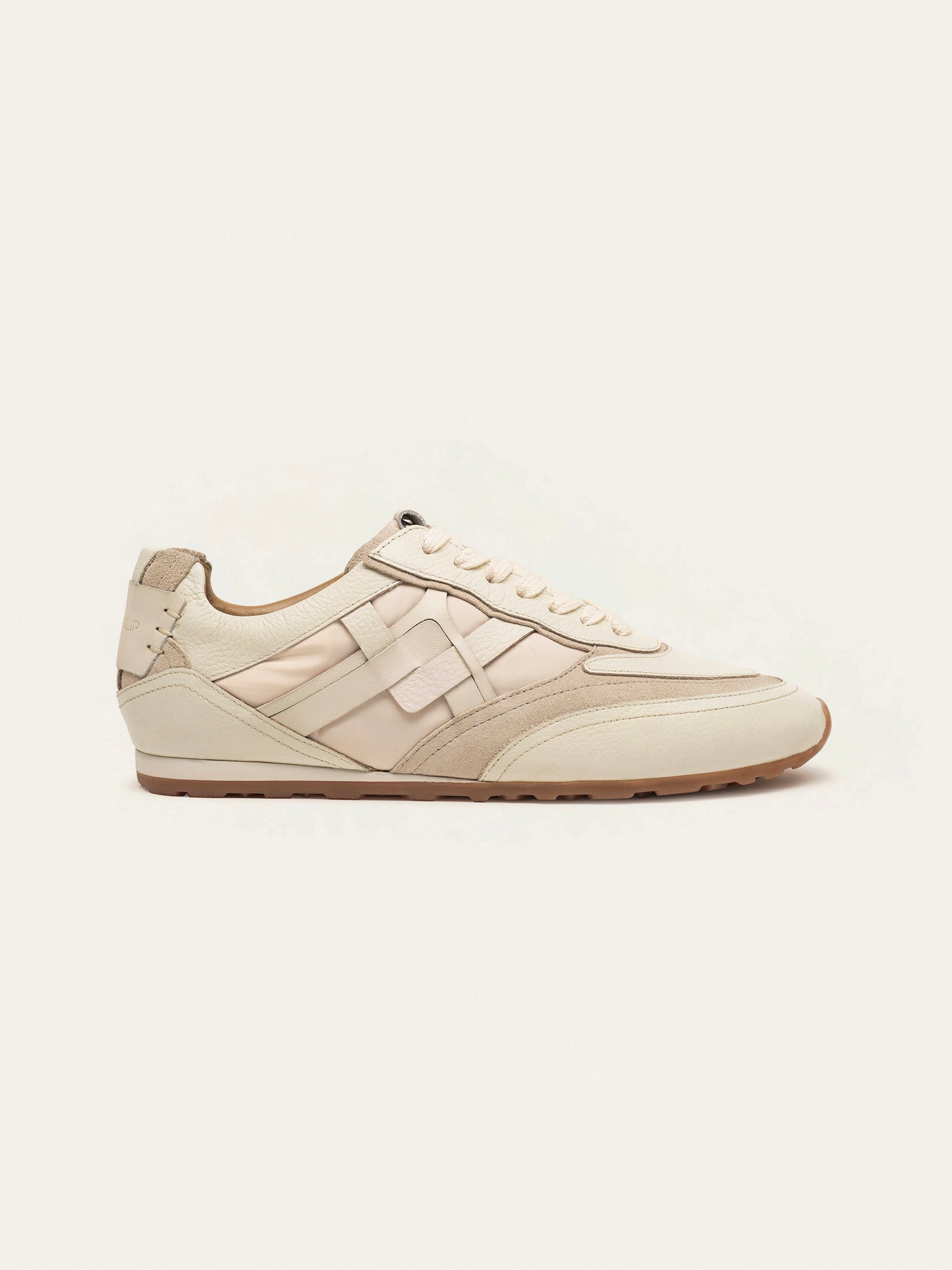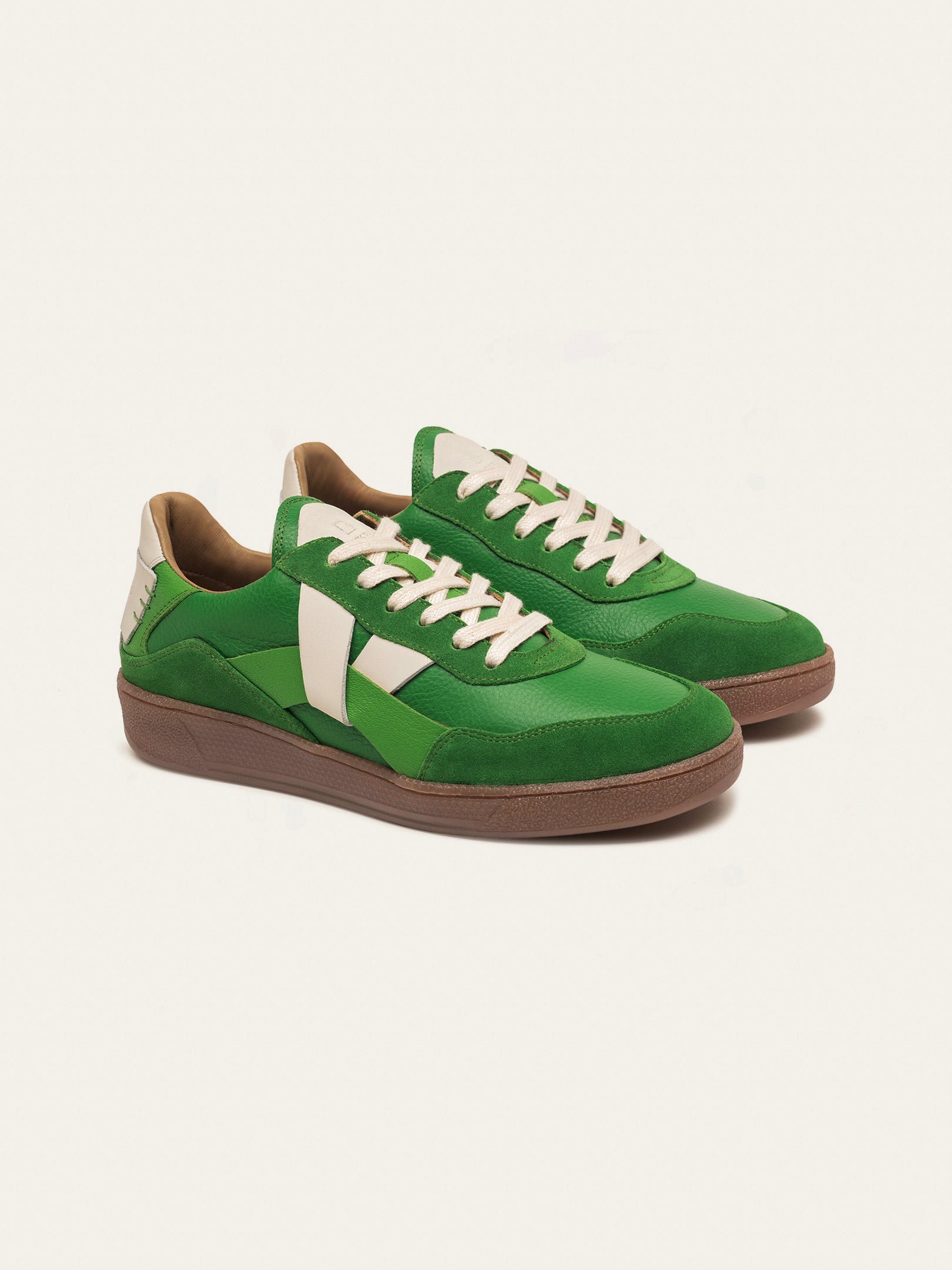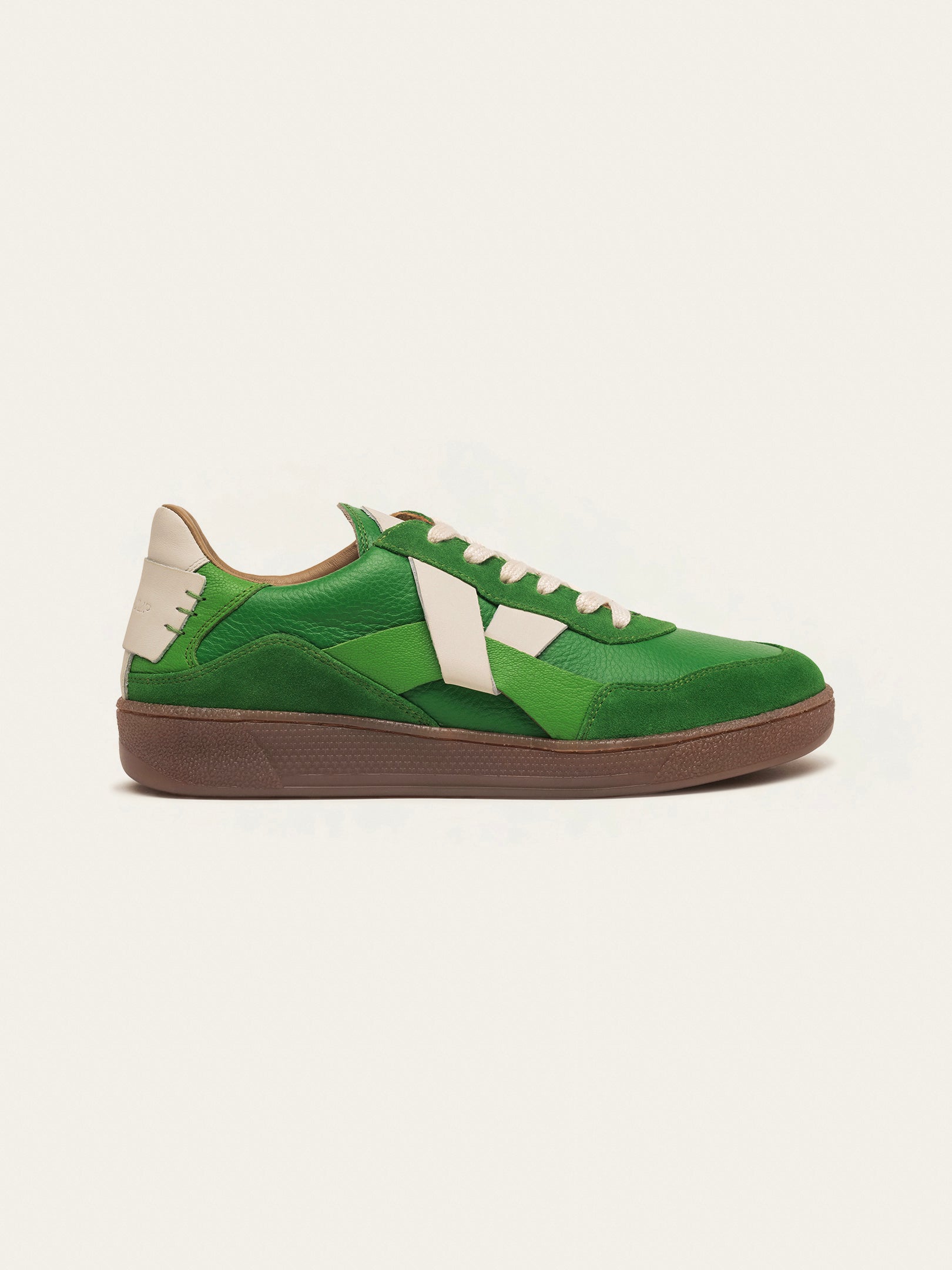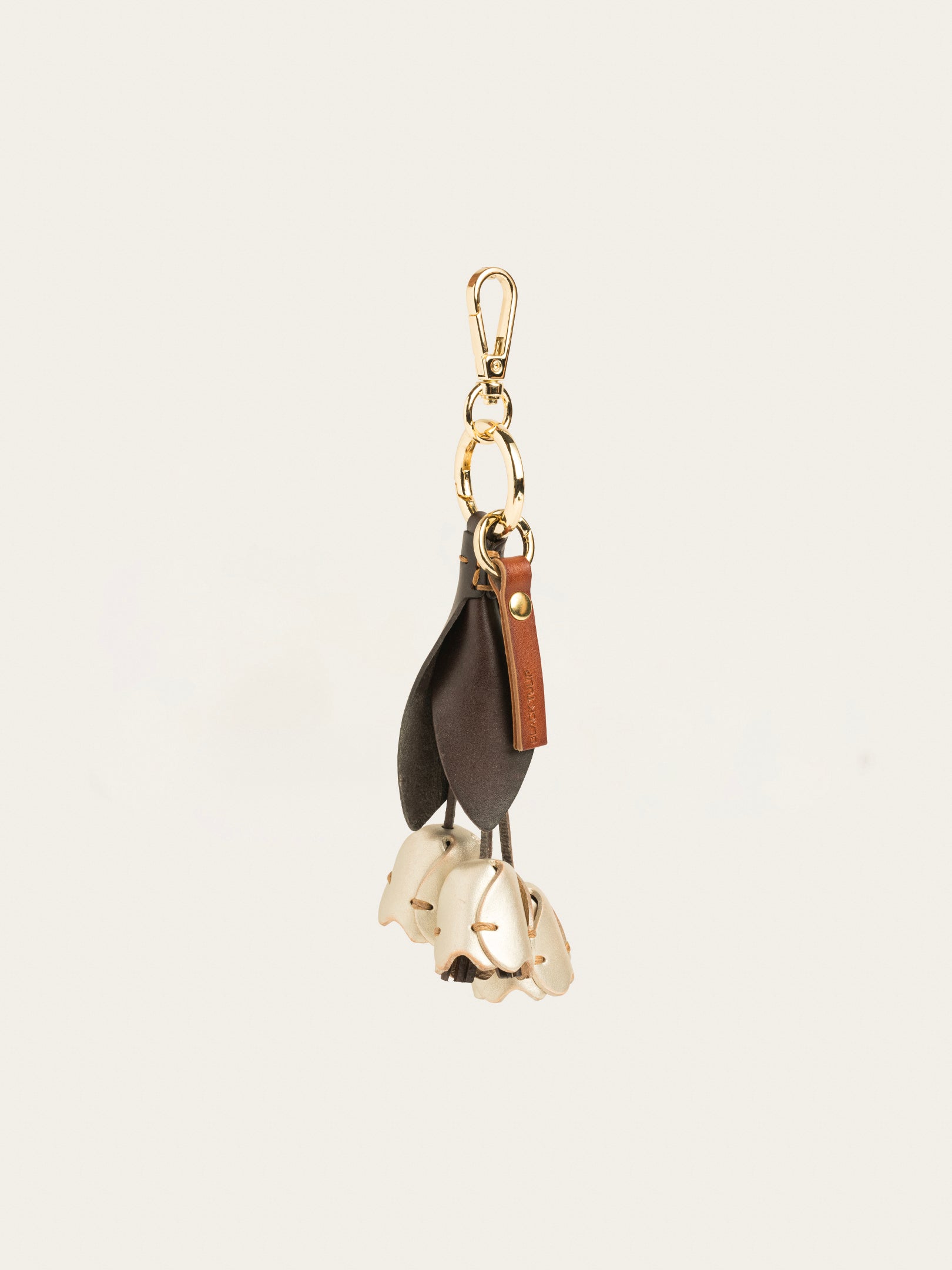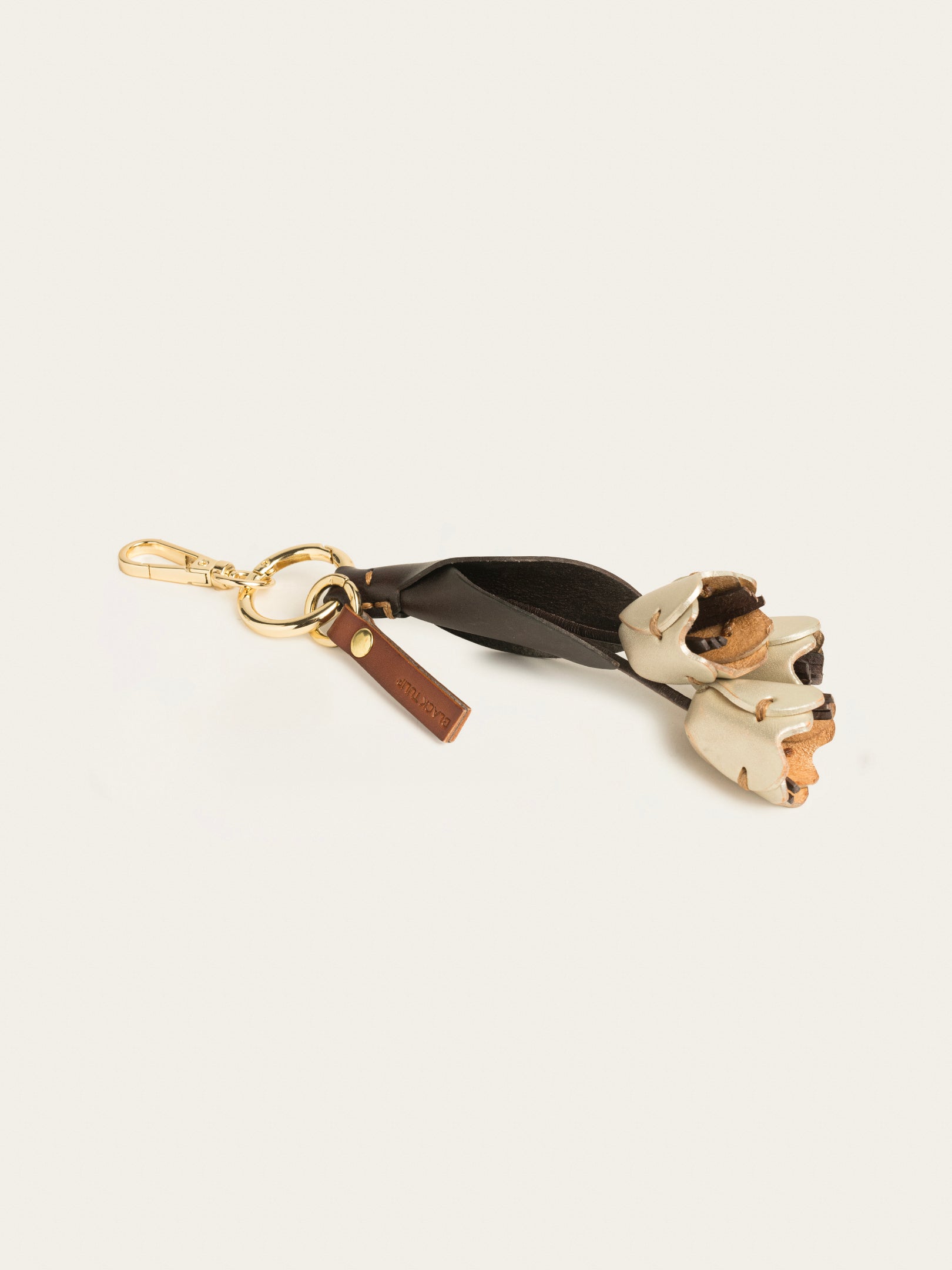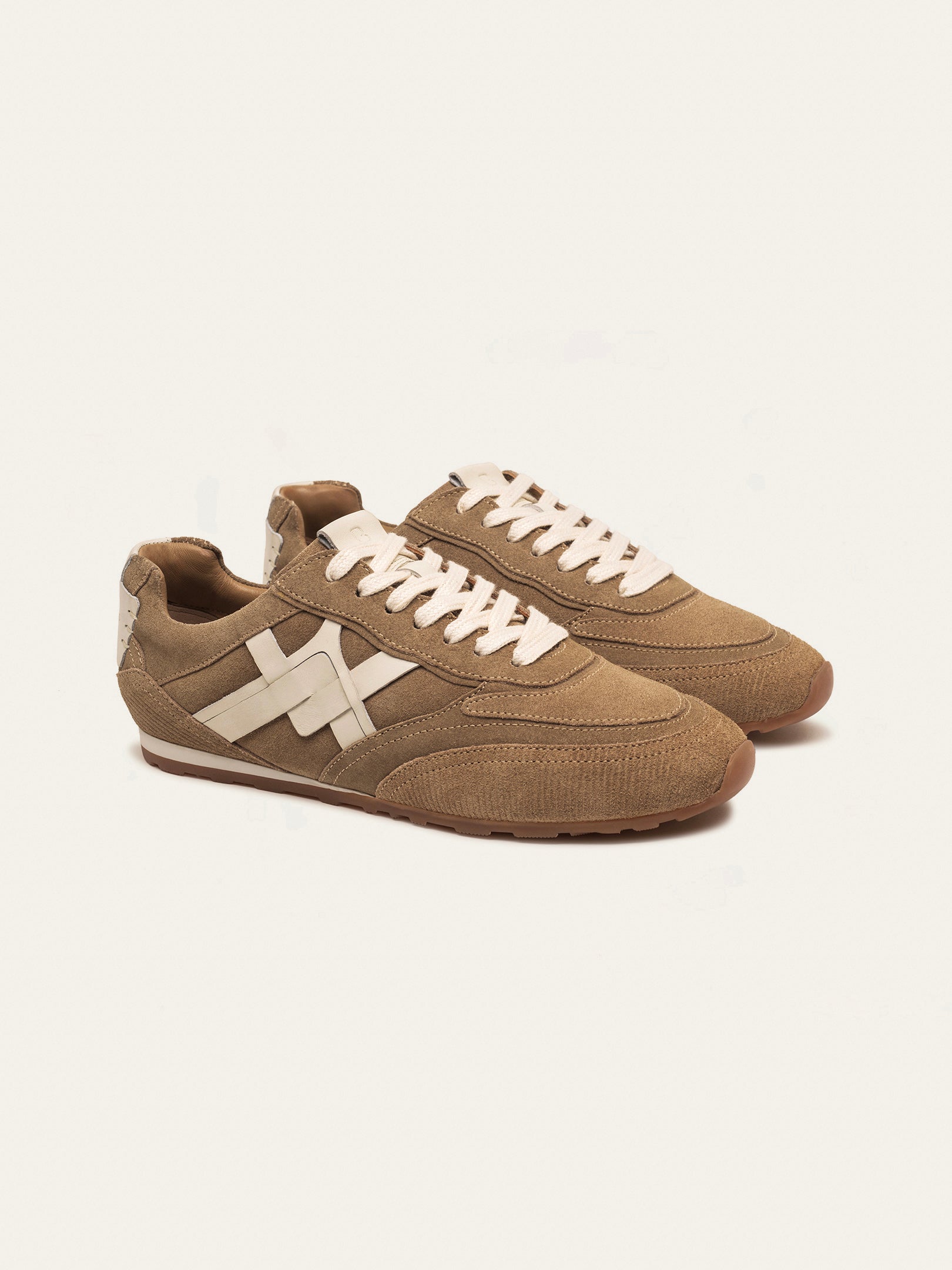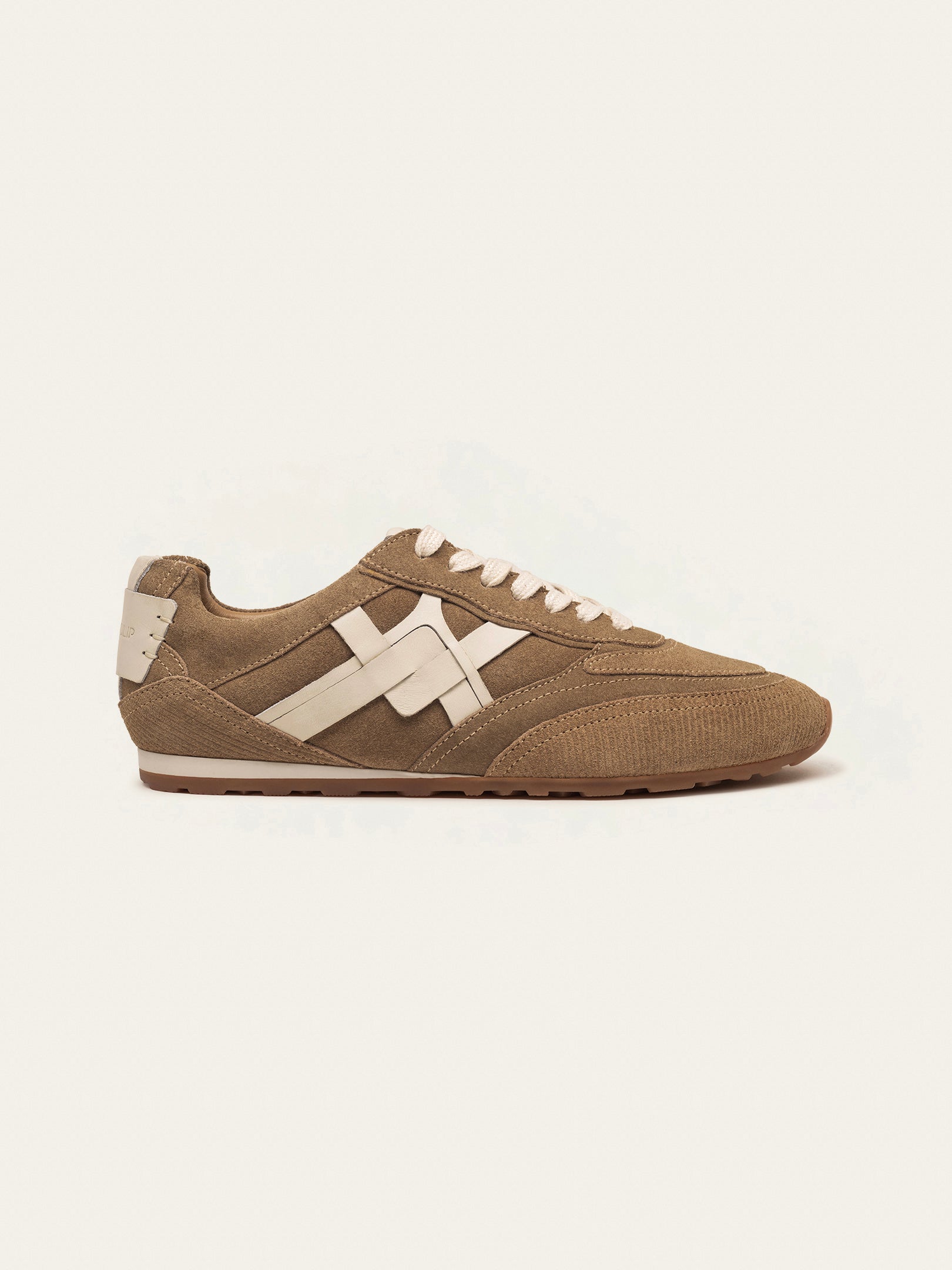Did you know that 68% of runners wear ill-fitting shoes when choosing their running footwear? Surprisingly, this common mistake could be undermining your running journey before it even begins.
With running seeing a huge resurgence in popularity in 2024 , more beginners than ever are lacing up and hitting the pavement. However, many don't realize that each stride creates an impact force of up to three times your body weight traveling through your feet and legs . Therefore, finding good running shoes for beginners isn't just about comfort—it's about preventing injuries like plantar fasciitis and chronic knee pain .
We've created this comprehensive running shoes guide to help you navigate the confusing world of running footwear. From understanding different running shoe types to finding the best women's running shoes for beginners, we'll cover everything you need to know. Additionally, with beginner running shoes averaging £110 in the UK and needing replacement every 400-500 miles (about 3-4 months for regular runners) , making the right choice is also financially important.
Whether you're shopping for your first pair or looking to upgrade from shoes that aren't working, this expert guide will simplify the process of how to choose running shoes that actually support your running goals.

Understand Your Running Style
Understanding your running style is the foundation of selecting the right running shoes. Your unique way of moving determines which shoes will provide proper support and comfort, ultimately affecting your running experience and injury risk.
What is pronation and why it matters
Pronation refers to the natural inward roll of your foot when it strikes the ground while running. This movement helps absorb shock and distribute impact forces throughout your body. Since each running step creates an impact of up to three times your body weight, proper pronation is crucial for injury prevention.
There are three main pronation types:
-
Neutral pronation: Your foot lands on the outer edge and rolls inward in a controlled manner, distributing weight evenly. This is the ideal motion, with your foot following an S-shaped pattern from the outer heel to the big toe [1].
-
Overpronation: Your foot rolls excessively inward upon landing, causing the inner edge of your foot to take most of the weight instead of it being centered on the ball of your foot. Approximately 70% of runners overpronate [2]. This pattern is more common in runners with low arches or flat feet and can lead to shin splints, plantar fasciitis, and knee pain [3].
-
Underpronation (supination): Your foot doesn't roll inward enough, placing excessive pressure on the outside of your foot and smaller toes. This creates a jarring effect and increases shock transmission through the lower leg [4]. Underpronators often have high arches and may experience ankle injuries and shin splints [3].
How to identify your gait type
Professional gait analysis is the most accurate method to determine your pronation type. This typically involves recording video footage of you running on a treadmill, then analyzing your foot movement in slow motion [2]. Many specialty running stores offer this service free with shoe purchases.
Alternatively, examine the wear patterns on your current running shoes:
-
Overpronators: More wear on the inside of the heel and under the ball of the foot, especially the big toe [2]. When placed on a flat surface, shoes may show an inward tilt [1].
-
Neutral pronators: S-shape wear pattern from outer heel to big toe [1]. No tilt when placed on a flat surface [2].
-
Underpronators: More wear on the outside edge of the shoe [2]. Slight outward tilt when placed on a flat surface [1].
Furthermore, you can perform the "wet foot test" at home. Wet your foot, step onto paper or cardboard, and examine the footprint. A complete footprint indicates flat feet and likely overpronation, while a narrow footprint with little arch contact suggests high arches and possible underpronation [5].
The role of foot arch in shoe selection
Your foot arch type closely correlates with your pronation pattern. Although everyone's feet differ, they generally fall into three categories:
Low arch (flat foot): These feet tend to overpronate and may need stability shoes with medial support and firm midsoles [2][6]. The ankle may collapse inward, potentially affecting hip and knee alignment [2].
Medium arch: Generally associated with neutral pronation, medium arches provide good shock absorption and flexibility [2]. Neutral cushioned shoes work best for this foot type [7].
High arch: Common in underpronators, high arches limit natural shock absorption [2]. Look for neutral shoes with extra cushioning, particularly in the heel and outer edge, to compensate for the reduced natural shock absorption [3][7].
By identifying your pronation type and arch pattern first, you'll be much better equipped to choose the perfect running shoes for beginners that address your specific needs.
Know the Different Types of Running Shoes
Running shoes come in various types, each designed for specific needs and conditions. Selecting the right shoe category is essential for comfort, performance, and injury prevention in your running journey.
Neutral vs. stability vs. motion control
The first major categorization of running shoes relates to pronation control:
Neutral shoes are designed for runners with normal pronation or those who underpronate (supinate). These shoes feature even cushioning across the midsole with no corrective elements. They tend to be lighter and more flexible than other types, allowing your feet to move naturally [1]. About 61% of men and 55% of women are neutral runners, making this the most common shoe type [1].
Stability shoes provide additional support to help offset excessive pronation. They typically include features like medial posts (firmer foam sections on the inner side) or guide rail systems that gently correct your foot's motion [3]. Modern stability shoes have evolved from rigid motion-control models to more flexible options that still offer essential support [8]. Runners with low or flat arches often benefit from stability shoes [9].
Motion control shoes represent the maximum level of stability, designed for severe overpronators or heavier runners who need substantial support [10]. These women trainers shoes include rigid features to limit excessive foot movement and are typically heavier and less flexible than other options [11]. Moreover, they provide enhanced heel support and a wider base for improved stability [3].
Road vs. trail vs. track shoes
The surface you run on dictates another important shoe classification:
Road running shoes are built for pavement and tarmac. They feature smooth outsoles with one-directional grip patterns for forward movement and substantial cushioning to absorb the shock of hard surfaces [1]. Road shoes are typically lightweight with breathable uppers and are ideal for beginners starting on pavements or treadmills [4].
Trail running shoes are specifically designed for off-road terrain. Key features include:
-
Chunky, aggressive lugs for traction on slippery surfaces [1]
-
Protective elements like rock plates to shield against sharp objects [12]
-
Reinforced uppers to resist abrasion from rocks and branches [13]
-
Water-resistant materials to keep feet dry in wet conditions [1]
Trail shoes typically have stiffer midsoles for stability on uneven terrain and lower heel-to-toe drops to keep you closer to the ground [13]. Consequently, they're heavier than road shoes but offer essential protection for off-road adventures.
Track shoes (spikes) are ultra-lightweight and minimalist, designed exclusively for track surfaces. They feature minimal cushioning and spikes or studs on the outsole for maximum grip [4]. As a beginner, you likely won't need track-specific shoes initially.
Cross-training shoes: when to avoid them
Cross-training shoes might seem like a versatile option, but they're not ideal for dedicated running. Here's why:
Cross-trainers are designed primarily for lateral (side-to-side) movement rather than forward motion [14]. In fact, the cushioning and stability of training shoes aren't optimized for the repetitive impact of running [14]. Using cross-trainers for running—especially distances beyond 1-3 miles—increases your risk of injury and discomfort [15].
Unlike running-specific shoes, cross-trainers typically have:
-
Less cushioning for shock absorption
-
Flatter soles for stability during weightlifting
-
Reinforced sides for lateral support, making them bulkier [14]
As physical therapist Jay Dicharry notes, "Wearing shoes that allow the feet to move and flex naturally is the best starting point for most runners" [16]. Ultimately, if you're serious about running regularly, invest in proper running shoes rather than attempting to make cross-trainers work for both activities [14].
Match Cushioning and Drop to Your Needs
The technical aspects of running shoes might seem overwhelming at first, but two critical features—cushioning and drop—can make or break your running experience. Once you understand these elements, selecting good running shoes for beginners becomes much simpler.
What is heel-to-toe drop?
Heel-to-toe drop (often simply called "drop") refers to the difference in height between the heel and forefoot of a running shoe, measured in millimeters. Imagine comparing flip-flops with high heels—the main difference is this height variation [2]. Most running shoes have a drop ranging from 0mm to 15mm [17].
Based on this measurement, shoes fall into four categories:
-
Zero drop (0mm): Heel and forefoot at same level
-
Low drop (1-4mm): Slight heel elevation
-
Mid drop (5-8mm): Moderate heel elevation
-
High drop (8+mm): Significant heel elevation [17]
The industry standard was traditionally around 10mm, though the current average in road running shoes sits at 8.6mm [2]. For beginners, experts typically recommend a heel drop of 8mm or higher as this proves safer and requires less adaptation [2].
How much cushioning is good for beginners?
Cushioning refers to the stack height—the amount of material between your foot and the ground. Unlike drop, which measures a difference, stack height measures the actual thickness of the midsole, usually at the heel [18].
For new runners, cushioned shoes with at least 30mm at the heel provide essential impact protection [2]. This cushioning creates a buffer zone that absorbs the shock of each footfall, which can reach up to three times your body weight.
Shoes are categorized by cushioning level:
-
Maximum cushion: 35mm+ stack height, originally designed for ultra-running
-
Over cushioned: 25-35mm, balancing comfort with performance
-
Traditional cushion: Less than 25mm, offering more ground feel [18]
Avoiding minimalist and carbon-plated shoes
Despite their popularity among experienced runners, both minimalist and carbon-plated shoes present challenges for beginners.
Minimalist shoes feature minimal cushioning and usually have zero or low drops. These designs force your feet to work harder and require a lengthy adaptation period [2]. Consequently, they're not recommended until you've developed foot strength and proper running form.
Similarly, carbon-plated shoes should be avoided initially for several reasons. First, they're designed to perform best at faster paces that beginners rarely maintain. Second, many are optimized for specific foot strikes, typically forefoot striking. Finally, they're considerably more expensive, averaging £220 compared to £130 for standard running shoes [2].
Remember that different heel drops affect which body parts absorb impact. Lower drops place more stress on ankles and Achilles tendons, whereas higher drops transfer force to knees and hips [17]. As a beginner, prioritize comfort and protection before experimenting with specialized footwear.
Choose Based on Terrain and Distance
Where and how far you run dramatically influences which shoes will serve you best. After understanding your gait and the technical aspects of shoes, your next step is matching footwear to your running environment and distance goals.
Shoes for road running
Road running shoes are specifically designed for pavement, tarmac, and treadmills. These shoes feature smooth outsoles that provide reliable grip on flat surfaces without adding unnecessary weight. The outsoles are typically made from durable rubber designed to withstand the repetitive impact of hard surfaces [19].
For beginners tackling roads and urban environments, look for:
-
Lightweight, breathable uppers that keep feet cool during longer runs
-
Ample cushioning to absorb the shock of hard surfaces
-
Flexible midsoles allowing for a smooth, efficient stride [4]
Road shoes are generally lighter than trail shoes, making them ideal for speedwork and long-distance efforts where every gram counts [4].
Shoes for trail running
Trail running presents unique challenges requiring specialized footwear. Unlike road shoes, trail running shoes offer:
Deep, multidirectional lugs (typically 3.5-4.5mm) for traction on loose or uneven ground [5] Reinforced toe caps and uppers to protect against rocks and roots [20] Rock plates in the midsole to disperse impact from sharp objects [21] More robust construction to withstand abrasions from natural elements [20]
For beginners venturing off-road, match your shoes to the trail type. Smooth trails require lighter shoes with moderate cushioning, hence technical terrain demands extra cushioning, stability, and robust tread [22].
How distance affects shoe choice
Anyone can figure out that running longer miles requires more time on your feet, creating additional stress on your body. Accordingly, your running distance should influence your shoe selection [21].
For short distances (5K and below), lightweight shoes with moderate cushioning often suffice [23].
For middle distances (10K to half marathon), seek a balance between cushioning and responsiveness [23].
For marathon distances or beyond, prioritize maximum cushioning and support to reduce fatigue and minimize injury risk over extended periods[23].
As a practical tip, consider sizing up 0.5-1 sizes from your normal footwear, especially for longer distances, as feet naturally swell during extended runs [7].
Fit, Comfort, and Durability Tips
Finding perfectly fitting running shoes extends their life and prevents injuries. Even with the best beginner running shoes, proper fit and maintenance are essential for optimal performance.
How to check for proper fit
The thumb rule for good running shoes is leaving a thumb's width of space between your longest toe and the shoe's end [24]. Try shoes late in the day when feet are naturally swollen [25]. Both feet should feel secure, yet comfortable—remember that approximately 66% of people have one foot larger than the other [26].
When examining fit, ensure the heel counter stabilizes without slipping [27]. Take out the sockliner to visually check shoe fit—your toes shouldn't overhang the sides [27]. Plus, consider going a full size larger than your casual shoes for running [28].
Signs your shoes need replacing
Most running shoes last between 300-500 miles, depending on your weight and running surface [4]. Replace them immediately if you notice:
-
Visible outsole wear or compressed midsoles [6]
-
Sudden soreness in feet, knees, or hips after runs [6]
-
Longitudinal creases in the midsole foam [6]
-
Less springy cushioning or unstable heel counters [29]
Even without hitting mileage targets, replace shoes every six months if you run occasionally [4].
Tips for maintaining your running shoes
Above all, reserve your running shoes exclusively for running [30]. First and foremost, always untie laces before removing shoes to maintain their shape [31]. Subsequently, store them away from heat sources and direct sunlight to prevent midsole deterioration [31].
To clean dirty shoes, use a soft brush with mild soap rather than washing machines, as they damage materials and adhesives [32].
Conclusion
Finding the right running shoes marks a crucial first step in your running journey. Proper footwear prevents injuries, enhances comfort, and ultimately helps you enjoy running for years to come.

Choosing running shoes might seem overwhelming at first, but breaking down the process makes it manageable. Understanding your pronation pattern and foot arch provides the foundation for all shoe decisions. After that, matching shoe type to your specific needs becomes much easier.
Remember that your running environment matters significantly. Road runners need different features than trail enthusiasts. Similarly, your planned distances should influence cushioning levels and overall support requirements.
Though minimalist or carbon-plated options might tempt you with their sleek designs, beginners should stick with traditional cushioned shoes until developing proper form and strength. Additionally, expect to replace your shoes every 300-500 miles to maintain optimal support.
Most importantly, comfort should guide your final decision. You will spend countless hours in these shoes, so they must feel right from the start. No amount of technical specifications can replace the feeling of shoes that work perfectly with your unique feet.
Start your running journey with the right foundation by taking time to find proper shoes. Your feet, knees, and entire body will thank you as you progress from beginner to experienced runner. Happy running!
Key Takeaways
Choosing the right running shoes as a beginner doesn't have to be overwhelming when you focus on these essential factors that will keep you comfortable and injury-free:
• Understand your foot type first: Identify whether you overpronate, underpronate, or have neutral pronation through gait analysis or examining wear patterns on old shoes.
• Start with cushioned, high-drop shoes: Beginners should choose shoes with 8mm+ heel-to-toe drop and maximum cushioning (30mm+ stack height) for injury prevention.
• Match shoes to your running surface: Road shoes for pavement with smooth outsoles, trail shoes for off-road with aggressive lugs and protection features.
• Prioritize proper fit over brand: Shop late in the day, leave thumb-width space at toe, and size up 0.5-1 from regular shoes since feet swell during runs.
• Replace shoes every 300-500 miles: Watch for compressed midsoles, uneven wear patterns, or new aches and pains as signs your shoes need replacing.
The key is starting with supportive, well-cushioned shoes that match your gait pattern and running environment. Avoid minimalist or carbon-plated options until you've built proper running form and strength. Remember, comfort should be your ultimate guide—the right shoes will feel good from day one and help you progress safely in your running journey.
FAQs
Q1. How do I determine my foot type and pronation? You can identify your foot type and pronation by examining the wear patterns on your current running shoes, performing a wet foot test, or getting a professional gait analysis at a specialty running store. Understanding your foot mechanics is crucial for selecting the right running shoes.
Q2. What features should I look for in beginner running shoes? As a beginner, look for running shoes with ample cushioning (at least 30mm stack height at the heel), a heel-to-toe drop of 8mm or higher, and stability features if you overpronate. Prioritize comfort and support over advanced technologies or minimalist designs.
Q3. How often should I replace my running shoes? Most running shoes should be replaced every 300-500 miles, which is typically every 3-4 months for regular runners. Look for signs of wear such as compressed midsoles, uneven outsole wear, or sudden soreness after runs as indicators that it's time for new shoes.
Q4. Should I choose different shoes for road and trail running? Yes, road and trail running require different shoe features. Road shoes have smoother outsoles and focus on cushioning for hard surfaces, while trail shoes offer aggressive tread patterns, rock plates, and reinforced uppers for protection on rough terrain. Choose based on where you'll be running most often.
Q5. How can I ensure a proper fit when buying running shoes? To ensure a proper fit, try on shoes later in the day when your feet are slightly swollen, leave about a thumb's width of space between your longest toe and the shoe's end, and consider going up half a size from your regular shoe size. Make sure the heel is secure and the shoe feels comfortable right away.
